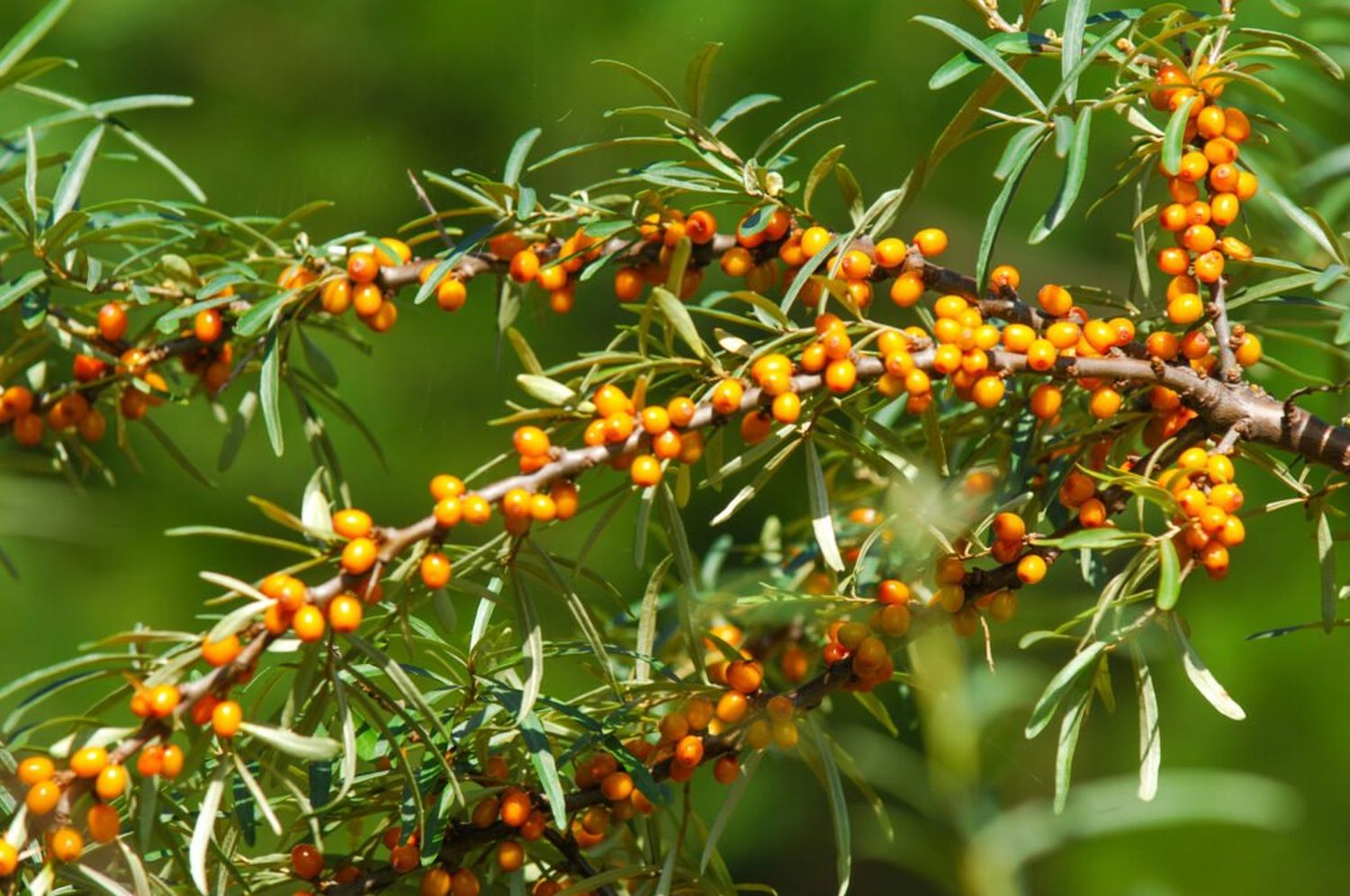
29 interesting facts about Sea buckthorn
- 👁️ 306
Sea buckthorn, a vibrant and resilient plant, has captured the interest of the health-conscious and environmentally aware alike. Thriving in harsh climates and poor soils where few plants can survive, sea buckthorn stands out not only for its bright orange berries but also for its impressive nutritional profile and environmental benefits. This remarkable plant has a long history of use in traditional medicine and is now celebrated for its wide range of health benefits, from skincare to heart health. Let’s delve into the fascinating world of sea buckthorn, exploring its unique characteristics, uses, and contributions to both health and the environment.
- Sea buckthorn (Hippophae rhamnoides) is native to Europe and Asia, found in the mountainous and coastal areas.
- The plant is known for its ability to prevent soil erosion and improve the quality of the land, making it valuable for environmental restoration projects.
- Sea buckthorn berries are rich in vitamins C, A, E, and omega fatty acids, including omega-7, rare in the plant kingdom.
- The plant has been used in traditional medicine for centuries, particularly in China, Russia, and Mongolia, for a variety of ailments.
- Sea buckthorn oil, extracted from the berries, leaves, and seeds, is used in a wide range of skincare products due to its regenerative properties.
- The berries have a sour, tangy taste and are often used in jams, juices, and nutritional supplements.
- Sea buckthorn is considered a superfood because of its high nutrient content, including antioxidants, vitamins, and minerals.
- The leaves of the sea buckthorn plant are also nutritious and can be used to make tea.
- NASA has explored sea buckthorn as a potential food source for astronauts due to its nutritional profile.
- The plant is a nitrogen fixer, meaning it can convert atmospheric nitrogen into a form that is usable by plants, enriching the soil.
- Sea buckthorn berries are a natural source of serotonin, which can help improve mood and sleep.
- The oil extracted from sea buckthorn is used in traditional medicine to treat skin burns, eczema, and other skin conditions.
- Sea buckthorn is drought-resistant, making it an ideal plant for reforestation in arid and semiarid regions.
- The plant supports biodiversity by providing habitat and food for various bird species, insects, and mammals.
- Historical records suggest that sea buckthorn was known and used by the ancient Greeks and Tibetans for its health benefits.
- The berry’s high vitamin C content surpasses that of oranges and strawberries, making it an excellent immune booster.
- Sea buckthorn oil is a unique source of palmitoleic acid (omega-7), beneficial for heart health and metabolic syndrome.
- The plant’s deep root system helps combat soil erosion, particularly in sandy and loamy soils.
- Sea buckthorn has anti-inflammatory properties, making it beneficial for reducing symptoms of arthritis and other inflammatory conditions.
- The berry’s juice is used in cosmetics for its ability to rejuvenate the skin and improve complexion.
- Sea buckthorn contains flavonoids, which are known to reduce the risk of cancer.
- The plant is capable of growing in saline soils, where other crops fail to thrive.
- Harvesting sea buckthorn berries is labor-intensive due to the thorny nature of the bushes.
- Research has shown that sea buckthorn can help lower cholesterol levels.
- The plant plays a role in traditional celebrations and ceremonies in some cultures, symbolizing abundance and health.
- Sea buckthorn has been used in space missions as a dietary supplement for astronauts to protect against radiation.
- The plant’s ability to capture carbon dioxide makes it valuable in efforts to combat climate change.
- Sea buckthorn is a source of biofuel, with research ongoing into its viability as an alternative energy source.
- The berries’ high antioxidant content is beneficial for eye health, helping to prevent macular degeneration and cataracts.
Sea buckthorn is truly a marvel of nature, offering a wealth of nutritional, medicinal, and environmental benefits. Its resilience in harsh conditions and ability to enrich the land underscore its importance in ecosystem restoration and agriculture. With its rich composition of vitamins, minerals, and omega fatty acids, sea buckthorn stands out as a superfood that supports overall health and well-being. As research continues to uncover the full scope of its benefits, sea buckthorn is poised to play an increasingly significant role in nutrition, medicine, and environmental conservation. Its bright orange berries not only add color to the landscape but also promise a future where health and sustainability go hand in hand.
Sea buckthorn, a vibrant and resilient plant, has captured the interest of the health-conscious and environmentally aware alike. Thriving in harsh climates and poor soils where few plants can survive, sea buckthorn stands out not only for its bright orange berries but also for its impressive nutritional profile and environmental…